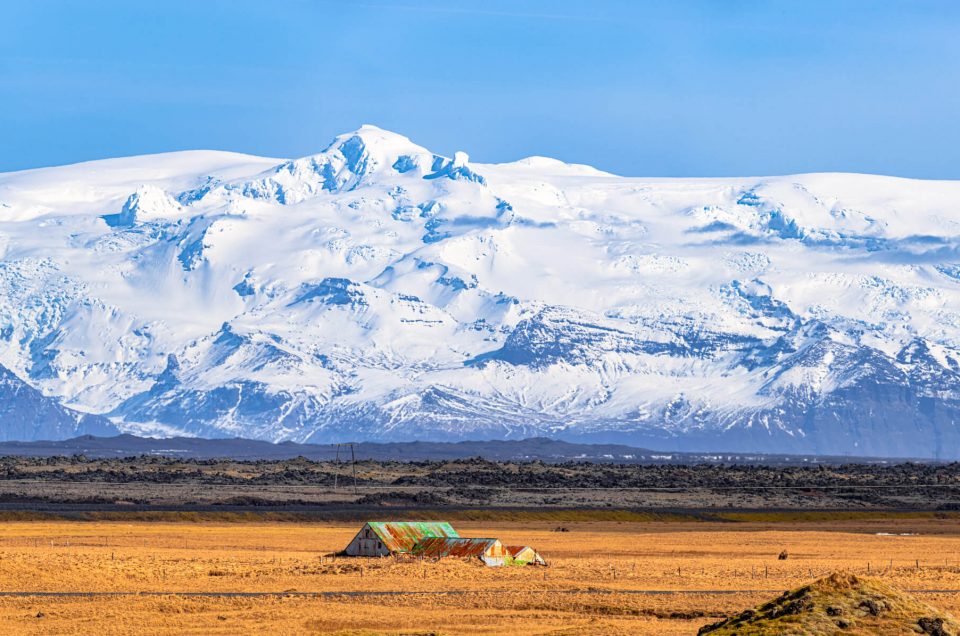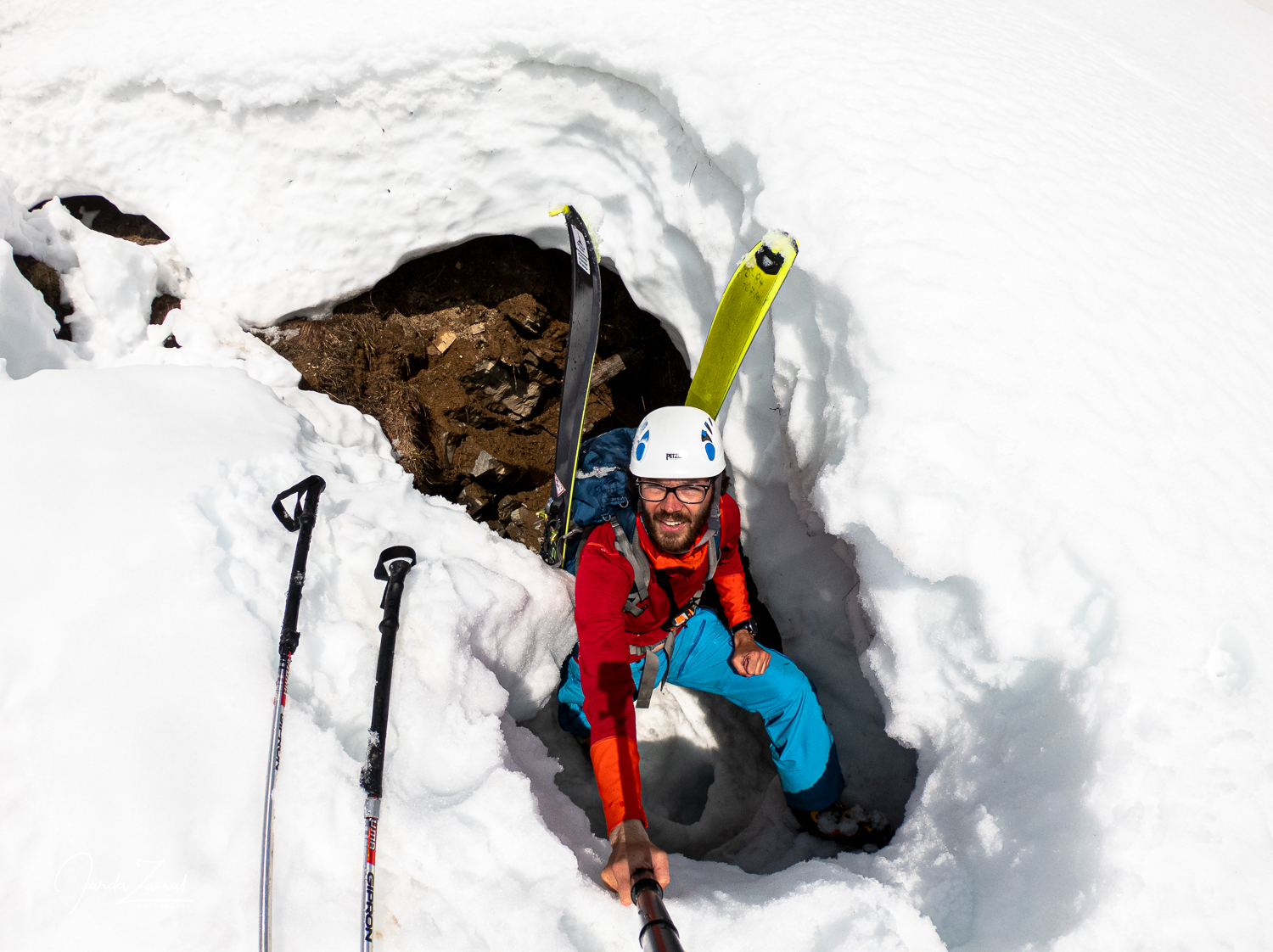Last Updated on June 3, 2024
Are you planning a trip to Iceland? Would you like to explore its famous Ring Road? Then, you found the correct article. I will present to you the most exciting places which I discovered during my trip to Iceland on the famous Icelandic Route 1. I myself love nature, hiking and fantastic viewpoints so don’t expect here tips for museums or other indoor activities. Instead, I was focusing on discovering the best locations with fantastic viewpoints, majestic waterfalls, sharp mountains, volcanic areas, best places to watch northern lights and of course hot springs during my trip to Iceland. Let’s go through them one by one. I’ll share practical information, my personal experience and my own pictures for inspiration of all locations. As a bonus I will also add information about where you can see puffins and what you shouldn’t forget to taste during your Icelandic trip.
General information of Icelandic Ring Road
- Best travel time: The whole year
- Distance: 1322 km
- Recommended travel time: At least a week, ten days recommended
- 4×4 car required: No
- Highglights: Hikes, viewpoints, waterfalls, mountains, volcanic areas, places to watch northern lights and hot springs
- Weather: Can be difficult to predixt. Follow weather forecast and warnings at Icelandic weather forecast website
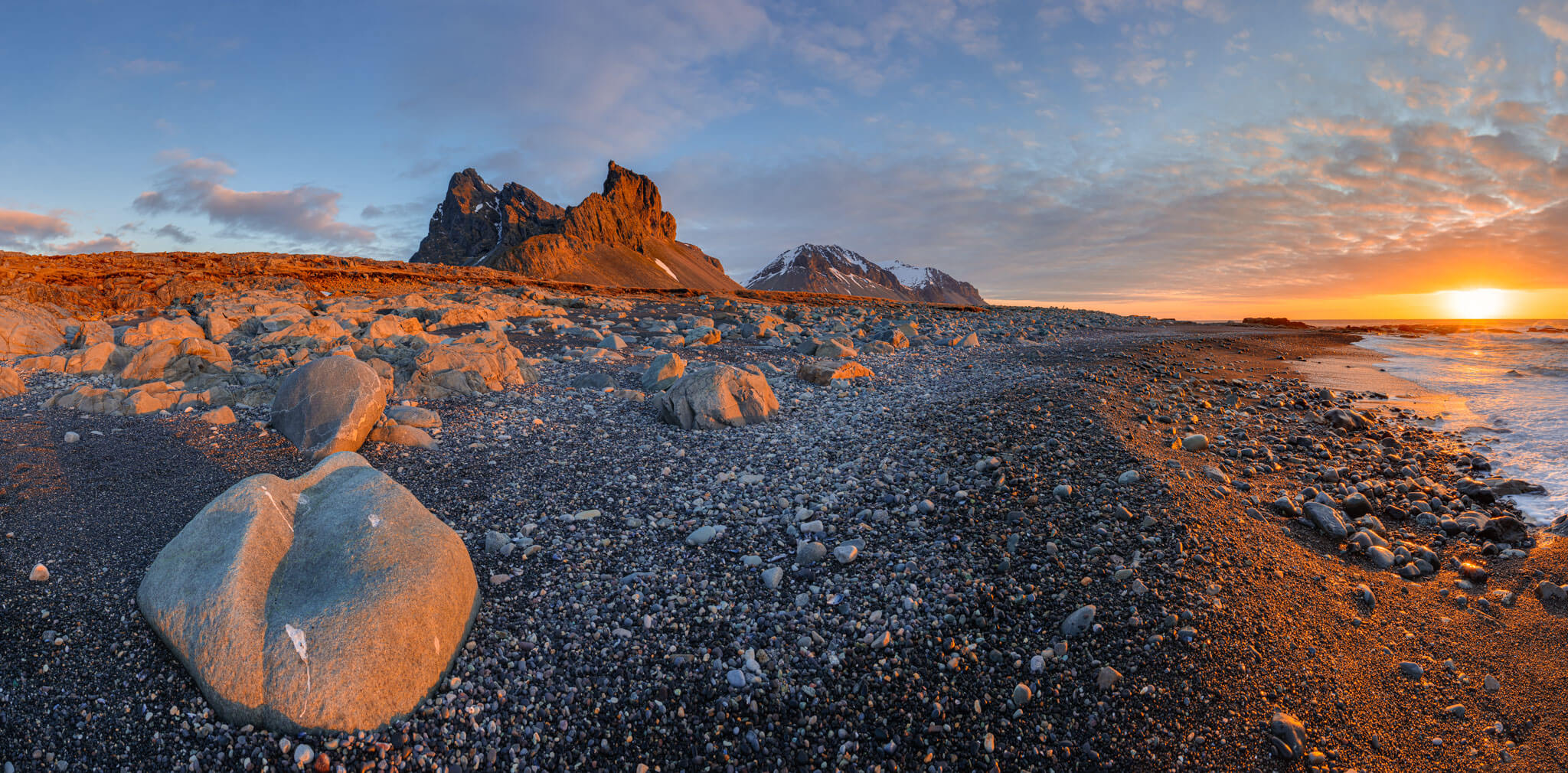
What is the best time to visit Icelandic Ring Road?
The best time to visit Iceland’s Ring Road depends on your interests and what kind of experience you’re looking for. I myself visited Iceland to see Ring Road in April and it was fantastic! Here’s a breakdown of the different seasons and what you can expect during each:
Summer on Ring Road (June to August)
Pros:
- Midnight Light: Extended daylight hours allow for more sightseeing and activities.
- Warmer Weather: Temperatures are milder, usually ranging from 10°C to 15°C
- Flora and Fauna: Green landscapes and vibrant wildlife, including puffin colonies (see below the best locations to see puffins).
- Festivals and Events: Numerous cultural events and festivals.
Cons:
- Crowds: This is peak tourist season, so popular sites are likely to be crowded.
- Higher Prices: Accommodation and rental car prices are at their highest.
Shoulder Seasons on Ring Road ((May and September)
Pros:
- Fewer Crowds: Less crowded than the peak summer months.
- Good Weather: Still relatively mild weather, though more variable than summer.
- Lower Prices: Accommodation and rental car prices are more reasonable.
Cons:
- Variable Weather: Weather can be more unpredictable
Winter on Ring Road (October to April)
Pros:
- Northern Lights: Best time to see the Aurora Borealis.
- Snowy Landscapes: Beautiful winter scenery, with ice-covered waterfalls and snowy mountains.
- Fewer Tourists: Significantly fewer tourists, offering a more peaceful experience.
- Lower Prices: Lower prices for accommodation and rental cars.
Cons:
- Short Daylight Hours: Limited daylight, with only 4-5 hours of light in December.
- Harsh Weather: Cold temperatures, snow, and ice can make driving and outdoor activities challenging.
- Limited Accessibility: Some roads and attractions, particularly in the highlands, are closed or difficult to access.
My secret tip is to visit Iceland during September. There are less tourists than during the main summer season but weather is still usually good. You will have ca 12 hours of daylight which means enough time to explore Icelandic wonders and it also gets dark so you can witness northern lights. It’s a perfect combination!
No matter when you choose to visit, it’s essential to check road conditions and weather forecasts regularly, as Icelandic weather can be very unpredictable. Always ensure your vehicle is suitable for the season and book accommodations and tours in advance during the high season to secure the best options.
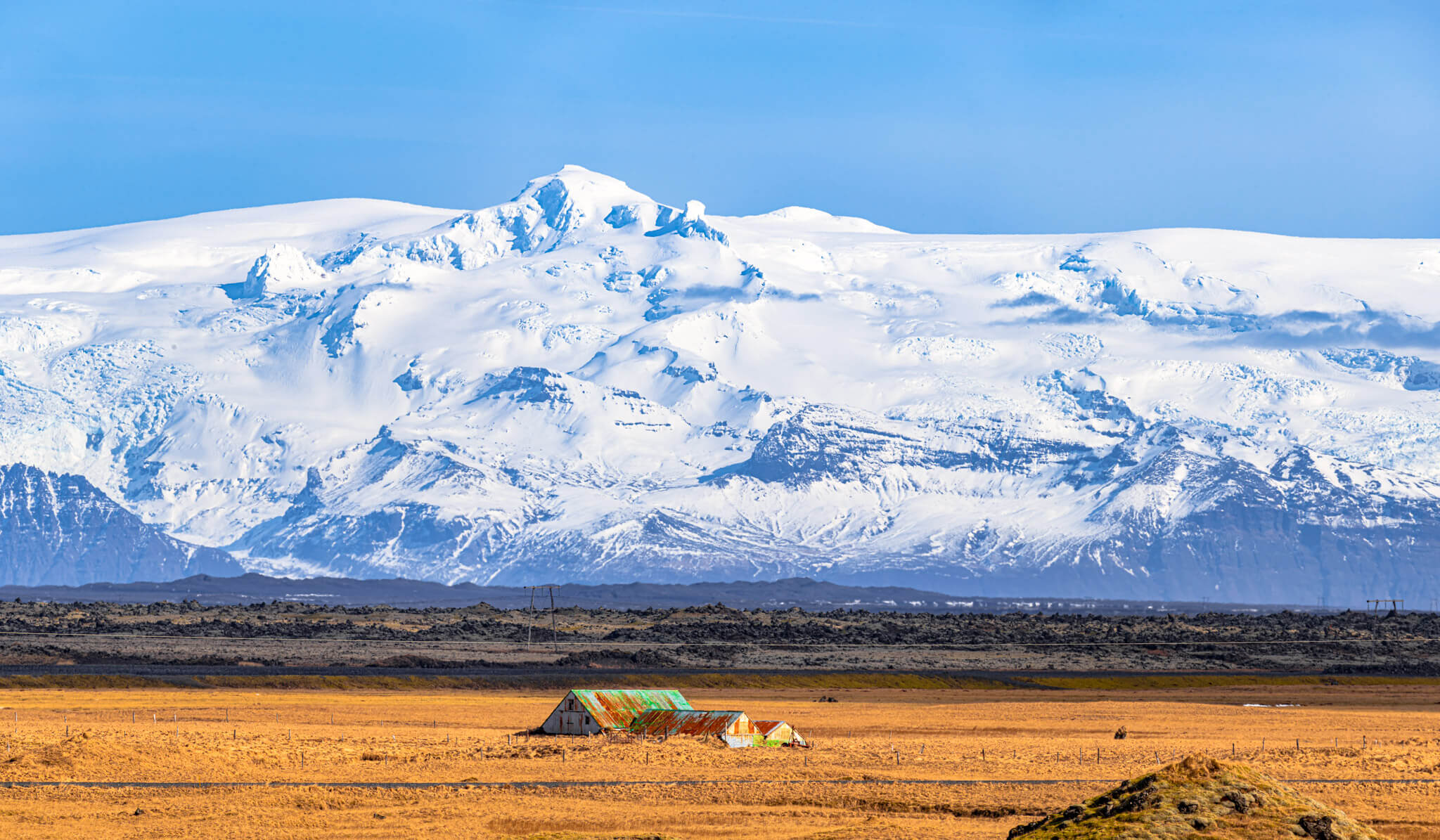
Which car should you rent before going to the Ring Road in Iceland?
Before we start talking about the best places to visit on the Ring Road in Iceland, it is important to consider which car you will be travelling with around. Even though the Ring Road is paved and great around the whole island, driving a car is challenging in Iceland due to extreme weather conditions. It’s important to consider your driving skills, time of the year when you would like to visit Iceland and also the comfort and safety of the car. Here are general rental car tips for Iceland:
Time of Year
- Summer (June to August): The famous Ring Road (Route 1) is in the best shape. In summer, a standard 2WD car is generally sufficient for most travellers.
- Winter (October to April): Winter conditions can be harsh with snow, ice, and limited daylight. A 4WD vehicle is highly recommended for safety even on the Ring Road.
Itinerary
- Staying on Paved Roads: If you plan to stick to paved roads on Ring Road and main tourist routes, a 2WD car can be enough in the summer. In winter, a 4WD is though advisable due to unpredictable weather.
- Exploring Highlands and F-Roads: If you want to explore more than just the Ring Road please read carefully. The highlands and many remote areas are only accessible via F-roads (mountain roads), which are often unpaved, rough, and require river crossings. A high-clearance 4WD vehicle is necessary, and these roads are generally only open from late June to early September (None of the below described places is reached by these roads. This is just a small warning in case you want to explore more)
Personal Preferences
- Comfort and Space: If you’re traveling with a group or carrying a lot of gear, a larger vehicle like an SUV or a van might be more comfortable.
- Camping: If you plan to camp or sleep in the car and want to save on accommodation, consider a campervan or a vehicle equipped for camping.
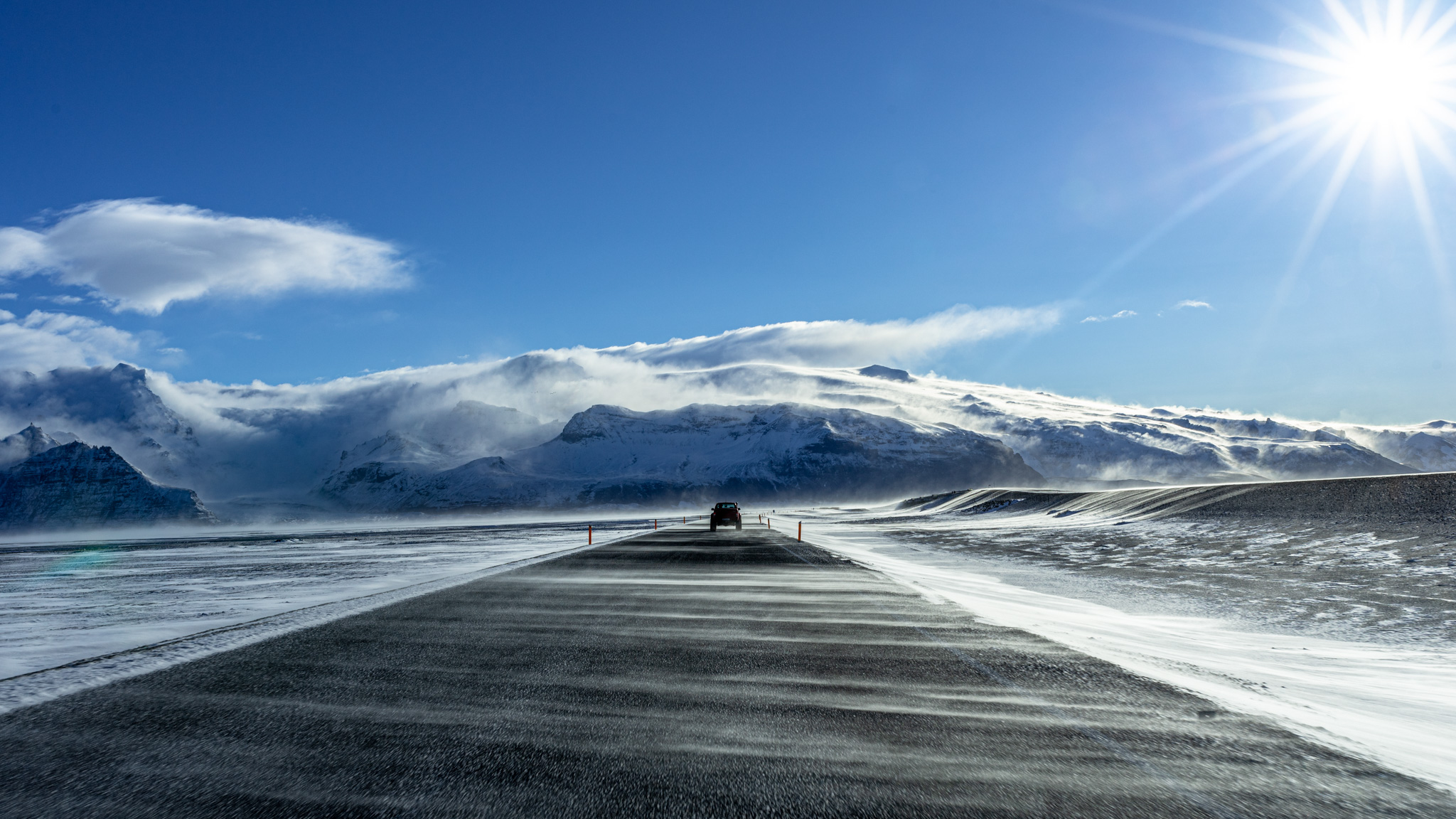
Rent a car at Reykjavik airport
Unless you come by ferry with own car, you will most likely arrive to Iceland by plane at Reykjavik airport. It’s most efficient to rent a car directly at the airport and use it during your whole trip. I myself rented a Subaru Forrester on my journey around Iceland in April and it was very comfortable and safe on the road.
At the same time, I saved a lot of money on accommodation because the car was big enough to accommodate two friends in the trunk 🙂 If you have the same plan, just don’t forget to bring your own mattress and a sleeping bag warm enough for the season. If you plan to stay in cosy accommodations on the way instead, don’t worry, I will provide you with tips with great reviews too.
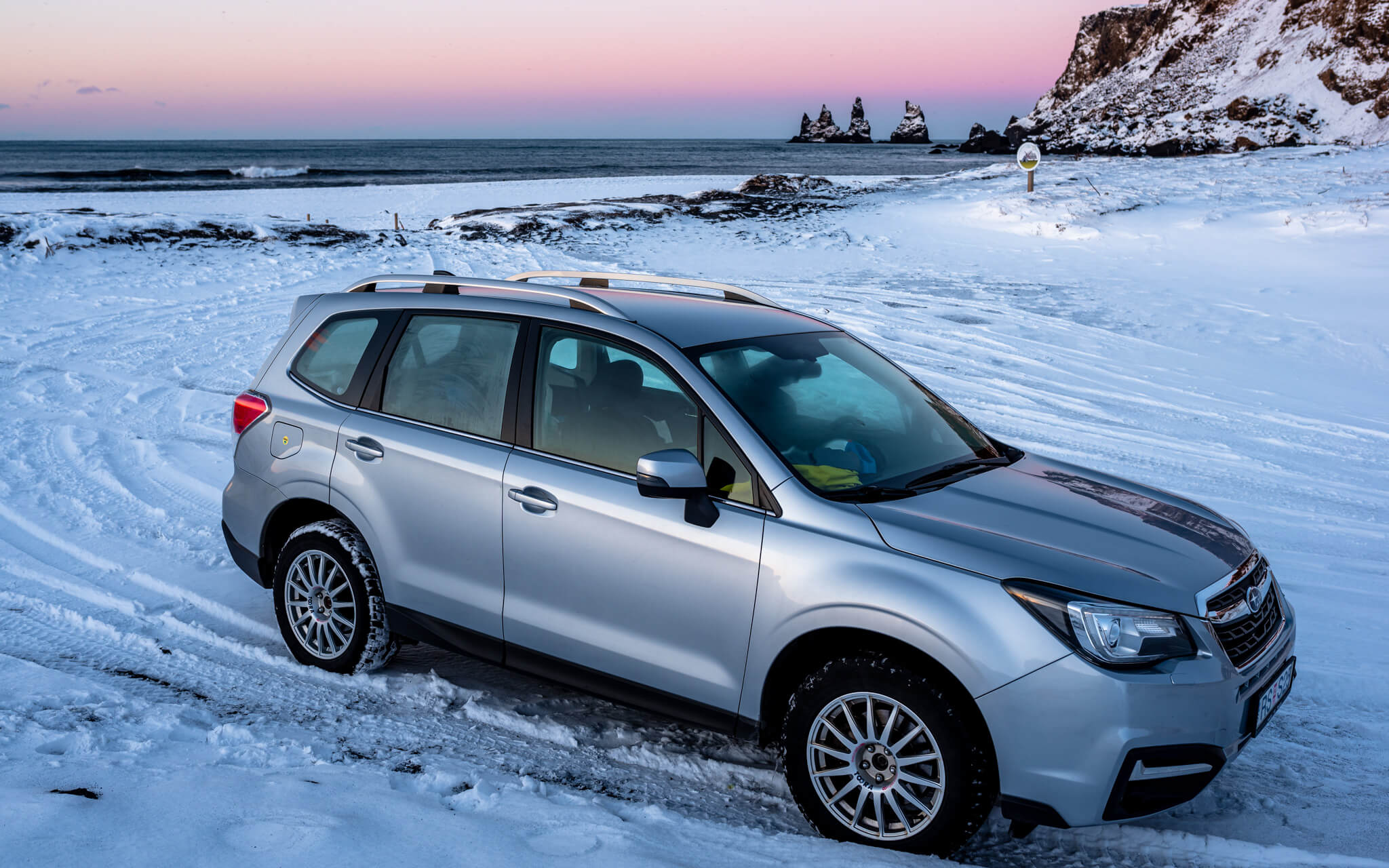
Ring Road Iceland Map
Before I finally start describing all the wonderful sights you can discover on Icelandic Ring Road, please take a look at map with recommended stops. Most of the sights are just nearby the main road, some of them require a short detour and a few require a longer hike and one is a proper expedition for demanding adventurers. My route also includes Snæfellsnes Peninsula where you can find many must see places and requires only one extra day. Here is the map:
Ring Road Iceland Itinerary
The itinerary below is possible to cover within 7 days if you exclude Snæfellsnes peninsula and if you remove extra days in Reykjavik in case of bad weather. I recommend 10 days though because I think skipping Snæfellsnes peninsula would be a big pity! It was for sure one of my favourite parts of Icelandic trip. I also added extra days which are recommended in case of bad weather. These can be used to discover the capital city or you can make a trip to see puffins.
- Day 1: Arrival in Reykjavik
- Day 2: Waterfalls Seljalandsfoss and Skógafoss and Solheimasandur plane wreck
- Day 3: Village Vík , Black Sand Beach and hike to Reynisdrangar
- Day 4: Vatnajökull glacier and/or mountain Hvannadalshnúkur
- Day 5: Canyon Mulagljufur, Jökulsárlón lagoon and Diamond Beach
- Day 6: Vestrahorn mountain and Mývatn nature baths
- Day 7: Volcano Krafla, Hverir Geothermal Area and Goðafoss waterfall
- Day 8: Village Akureyri, rocky island Hvitserkur, Kirkjufell mountain
- Day 9: Reykjavik and/or puffin trip
- Day 10: Reykjavik – extra day in case of bad weather; flight back home
Now, let’s take a deeper look at every stop of this Ring Road itinerary.
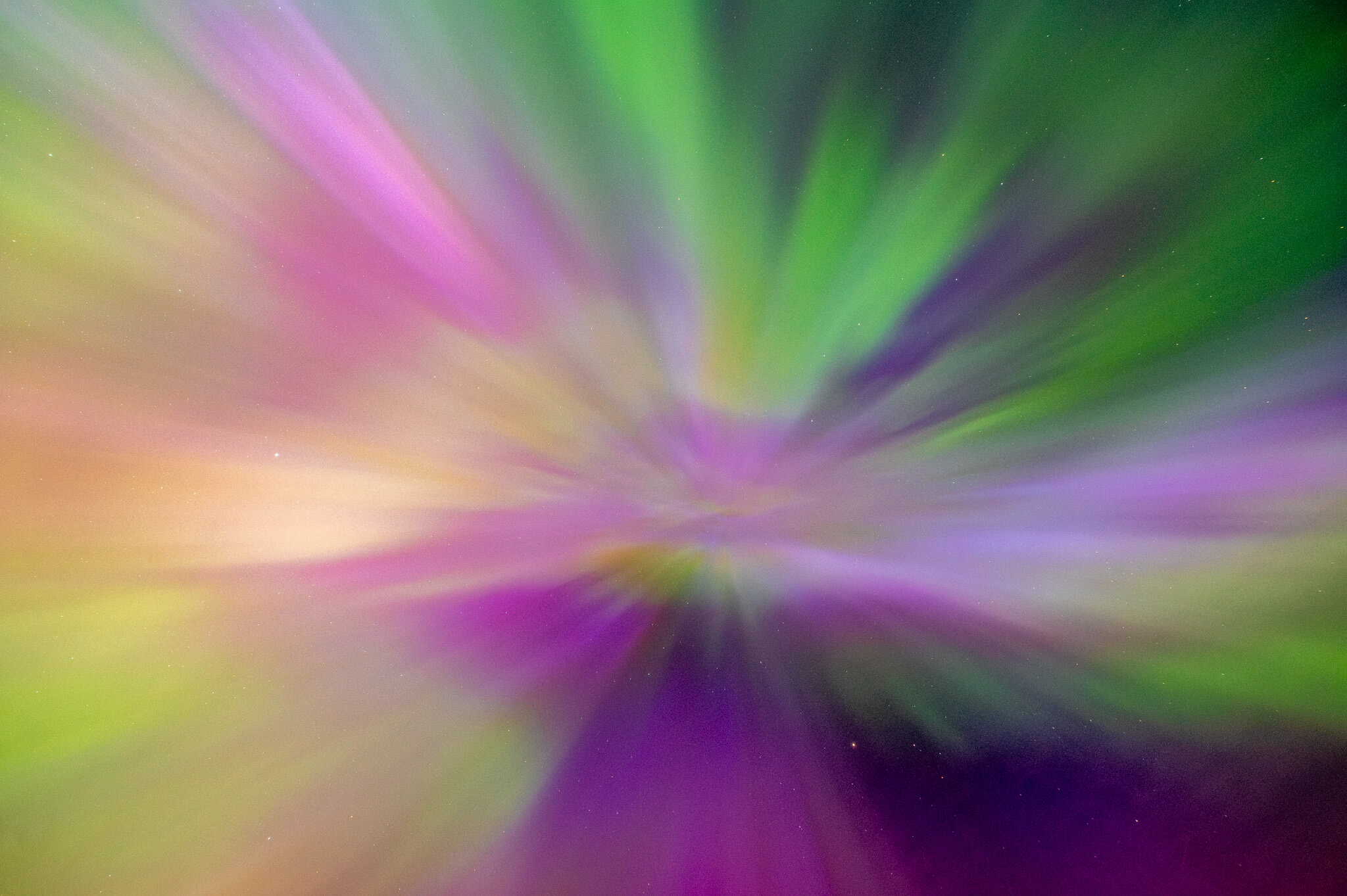
Every Icelandic trip starts in Reykjavik
After you pick up a rental car your trip can start! My recommendation is to visit Reykjavik at the beginning of your trip because it is the best spot to buy food for your trip. Reykjavik offers many grocery stores and there are also most affordable prices. If you also need any necessary equipment for your trip, you can buy or rent it in Reykjavik.
When it comes to sightseeing in Reykjavik, I recommend to keep it for the end of your trip. It’s always great to have some extra days in case of bad weather. If it happens, you might have to stay a day or two somewhere on your trip around Iceland. In this case, it’s better to lose a sightseeing day in Reykjavik than flight back home. For tips what to do in the Icelandic capital, read my tips at the end of this article.
I have also one secret tip for those who want to taste local beer or any other alcohol. Since there is state monopoly for alcohol in Iceland, prices are very high. You can buy alcohol only in restaurants, clubs and special stores called Vínbúðin. My recommendation is to buy alcohol directly at the airport after arrival. Since it’s tax free, it’s much better price than anywhere in Iceland later. It also offers many local Icelandic drinks so you can try something local for good prices.
My recommendation for accommodation for DAY 1: Reykjavík Treasure B&B
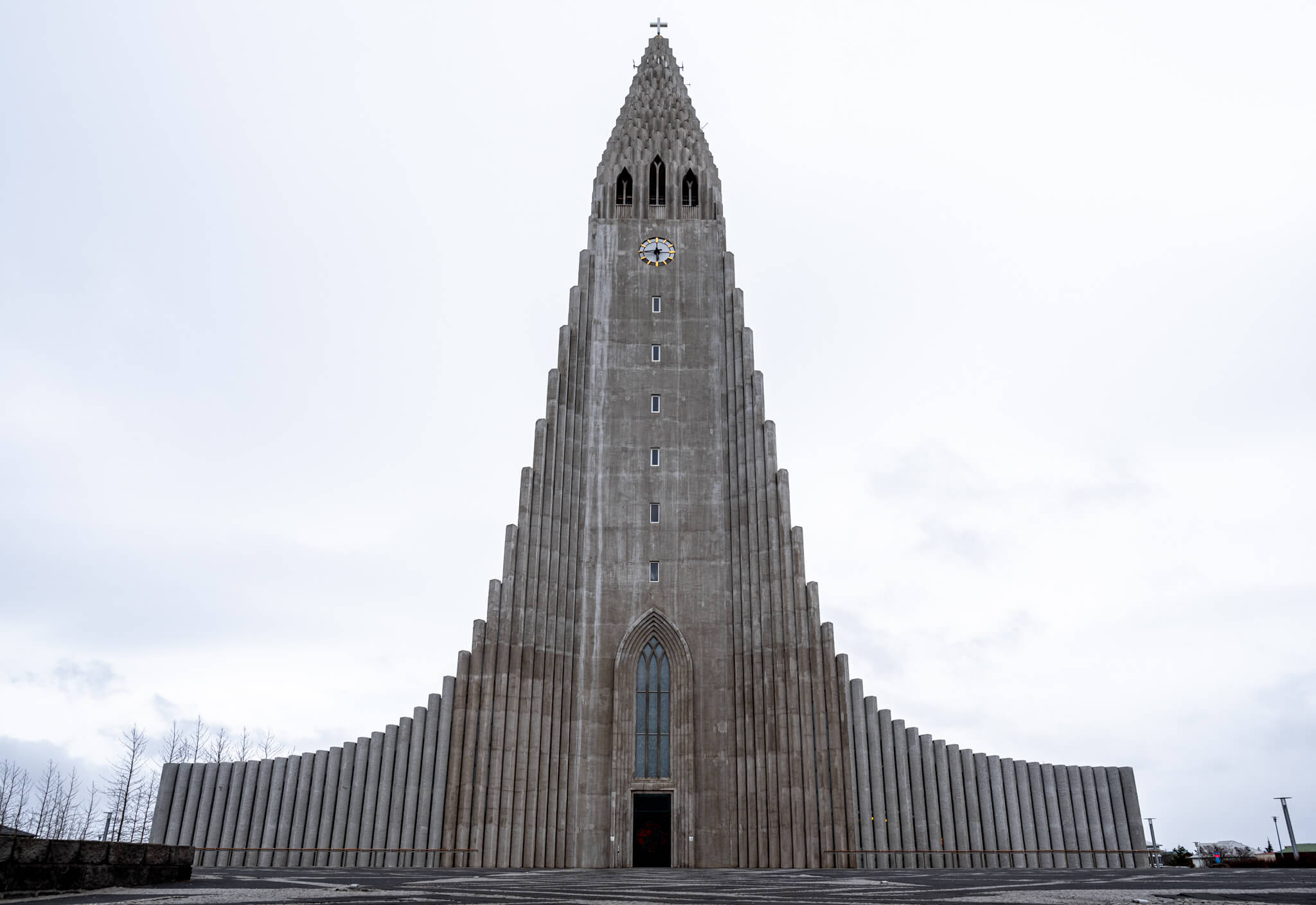
Two most impressive waterfalls on Ring Road Iceland – Seljalandsfoss and Skógafoss
The trip is finally starting. We head east on Route 1 towards two most impressive waterfalls of the island. They are called Seljalandsfoss and Skógafoss and you reach them after 100 minutes, respectively 120 minutes from Reykjavik. Both of the waterfalls are majestic. It’s recommended to visit both of them early in the morning during peak season because they are very popular and you want to avoid crowds.
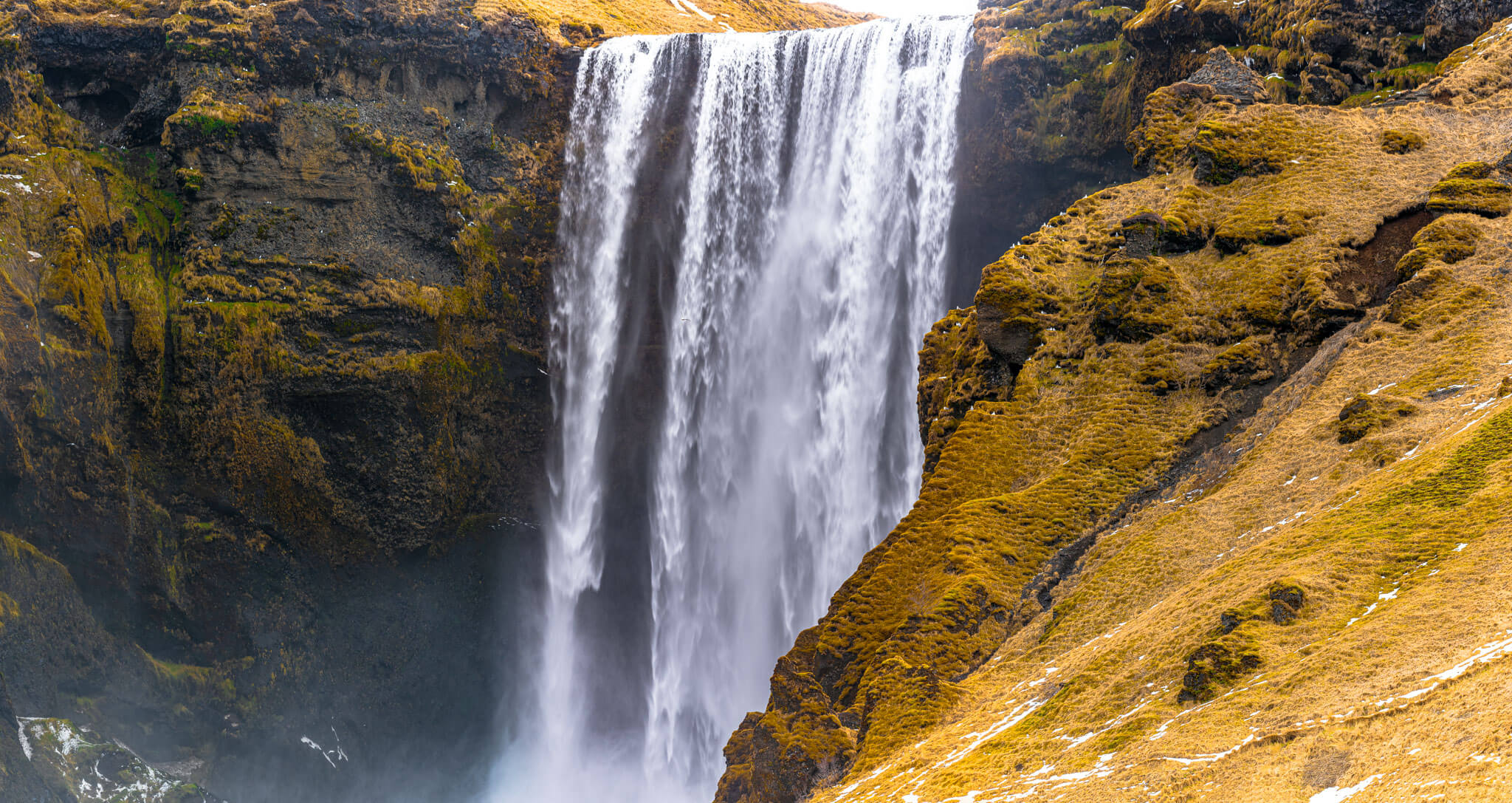
Make a hike to mysterious Solheimasandur Plane Wreck
The hike to the Solheimasandur Plane Wreck, located on the south coast of Iceland, is a popular and relatively easy trek that offers a unique experience of exploring a crash site of a U.S. Navy DC-3 plane. The plane crashed on the black sand beach in 1973, and all crew members survived. The dramatic landscape makes it a fascinating spot for photography. The contrast between the white plane and the black sand, often set against dramatic skies, provides excellent photographic opportunities. Sunsets and sunrises can be particularly striking.
If there is a great weather and aurora forecast, this is also a perfect spot to watch northern lights since there are no high mountains or forests around which would protect the views of sky. I wrote also an article about how to witness northern lights. Check it out to be prepared.
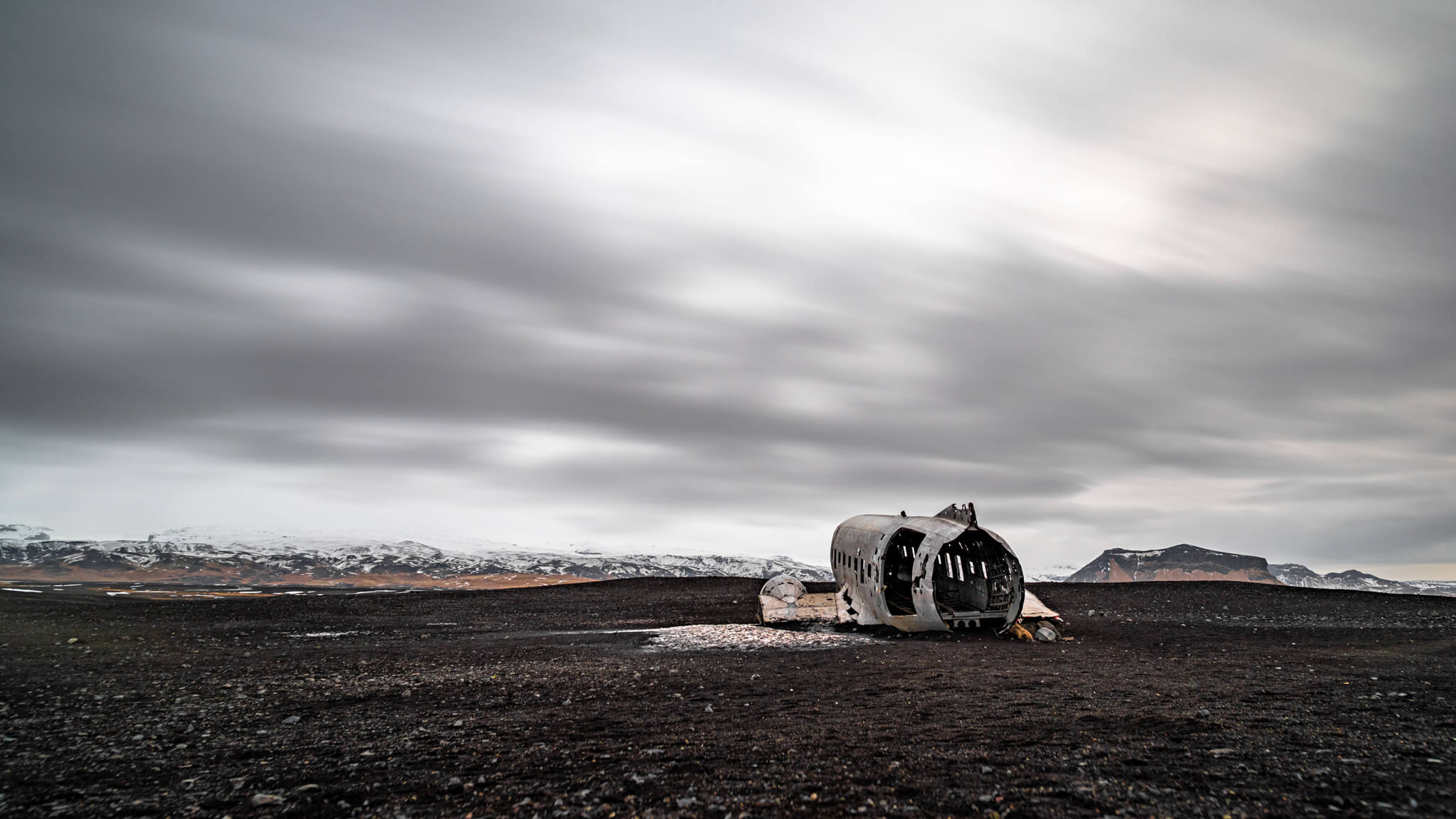
I recommend to finish the second day of the trip in village Vík. It isn’t far from Solheimasandur Plane Wreck and it’s simply wonderful.
My recommendation for accommodation for DAY 2: Black Beach Suites
The most beautiful village on Ring Road – Vík
In Vík you won’t only enjoy local fascinating black sand beach but you will also want to have a picture with local cute church Vík i Myrdal. If you have good weather in Vík, you can also make a hike along local cliffs where you can enjoy views over wonderful Reynisdrangar rock formations.
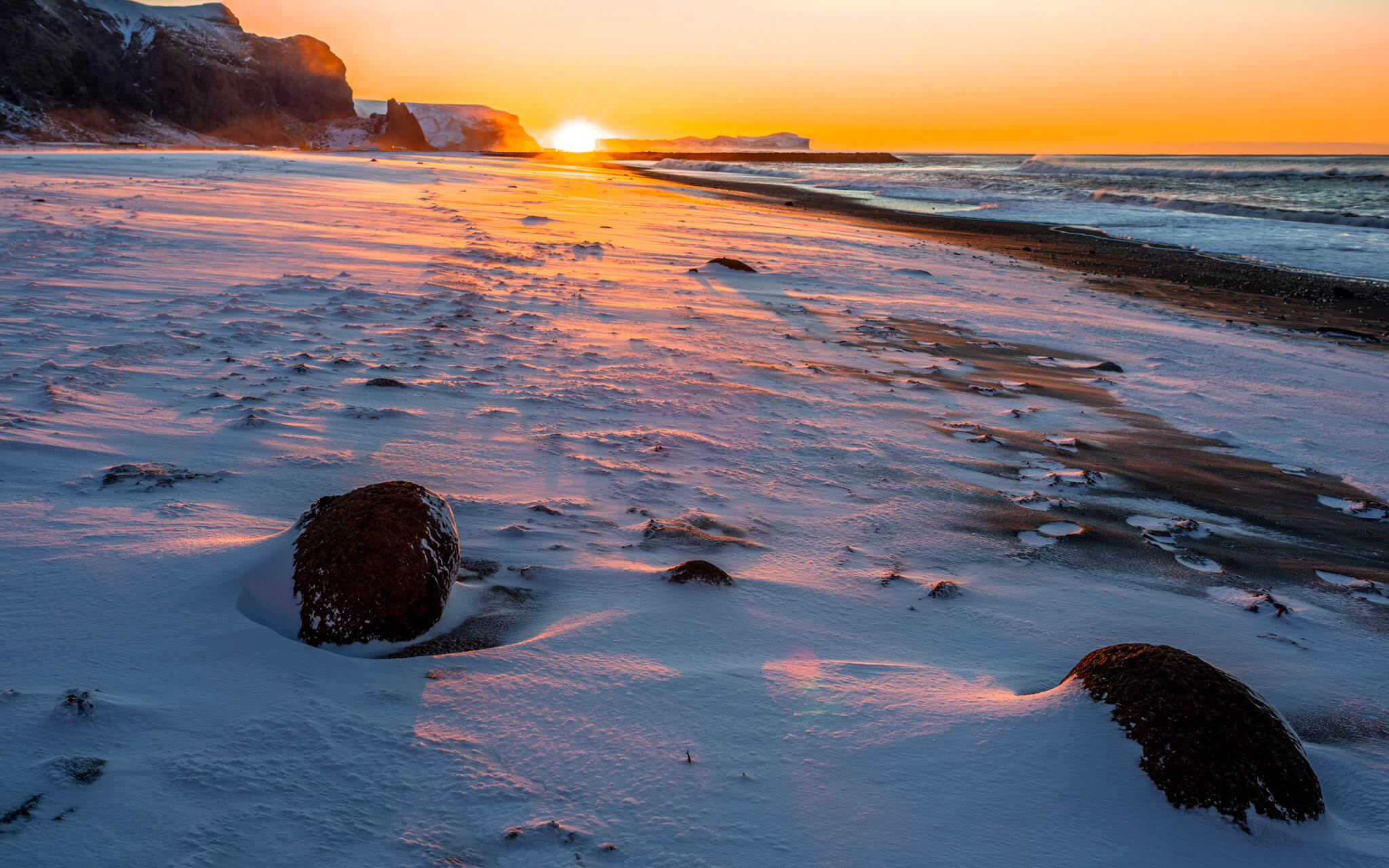
Climb the highest mountain of Iceland – Hvannadalshnúkur
Next day you have two options what to do. I’ll start with description of my personal favourite experience you can do in Iceland. I was lucky to test my limits and I climbed the highest mountain of Iceland. It’s a very challenging hike during which you need climbing equipment and a mountain guide but if you love hiking and climbing mountains, it’s a fantastic experience. I devoted a full article to my climb of Hvannadalshnúkur so check it out if you would like to see the best viewpoint of whole Iceland.
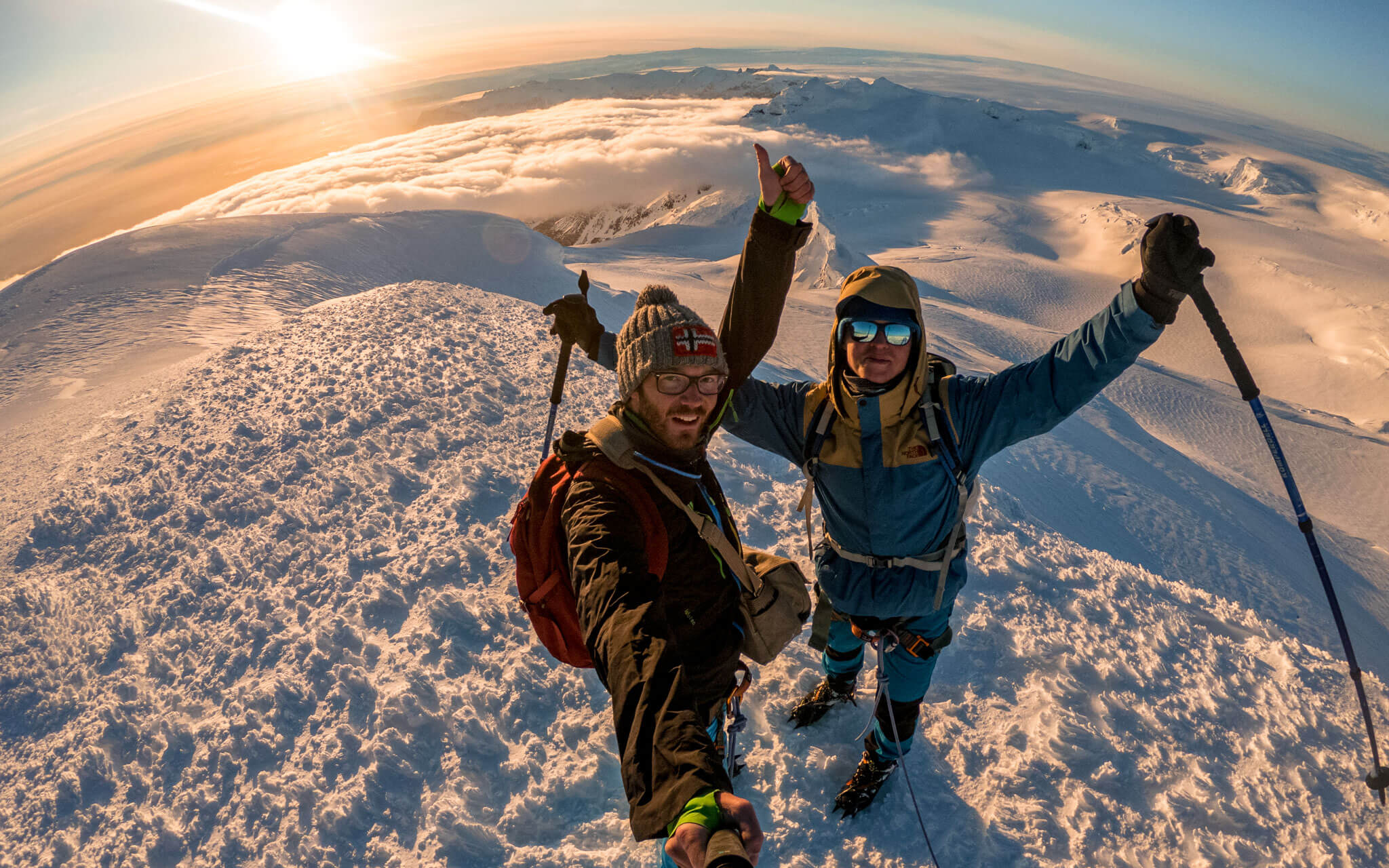
Visit the largest glacier in Europe Vatnajökull during trip on Ring Road
If you aren’t a fan of tough hiking, I have also another tips for you how you can enjoy views of the largest glacier in Europe. Visit Skaftafell where you can experience shorter hikes to the impressive glacier.
Besides the glacier, local hiking paths can also bring you to another unique waterfall Svartifoss which is special for its dramatic 3D wall of hexagonal basalt columns.
My recommendation for accommodation for DAY 3: Fosshotel Glacier Lagoon
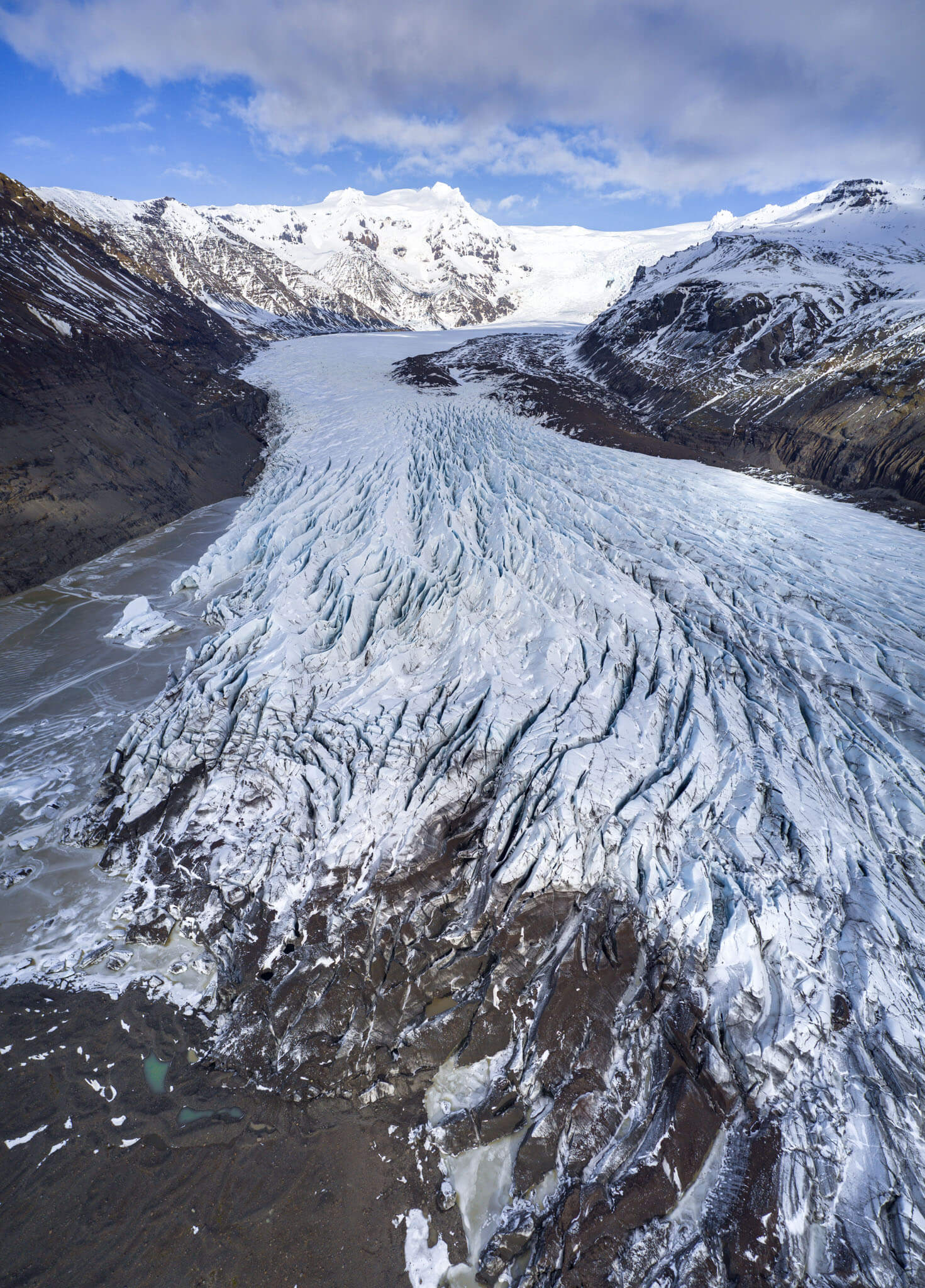
Hidden gem of Icelandic Ring Road – Canyon Mulagljufur
5th day starts with a visit of a unique canyon and continues with an amazing glacier lagoon. Múlagljúfur Canyon is a rewarding hike that showcases some of Iceland’s most stunning natural beauty. With its dramatic landscapes and Lord of the Rings atmosphere, it provides a perfect escape into nature for those willing to venture off the main tourist routes.
The hike is approximately 4 kilometers one way so it isn’t a tough challenge but the reward is fascinating. You will marvel at dramatic cliffs, cascading waterfalls, and lush greenery. To reach the trailhead, take the Ring Road (Route 1) and turn onto an unmarked gravel road near the Fjallsárlón Glacier Lagoon. Take a look at this hiking map for more information.
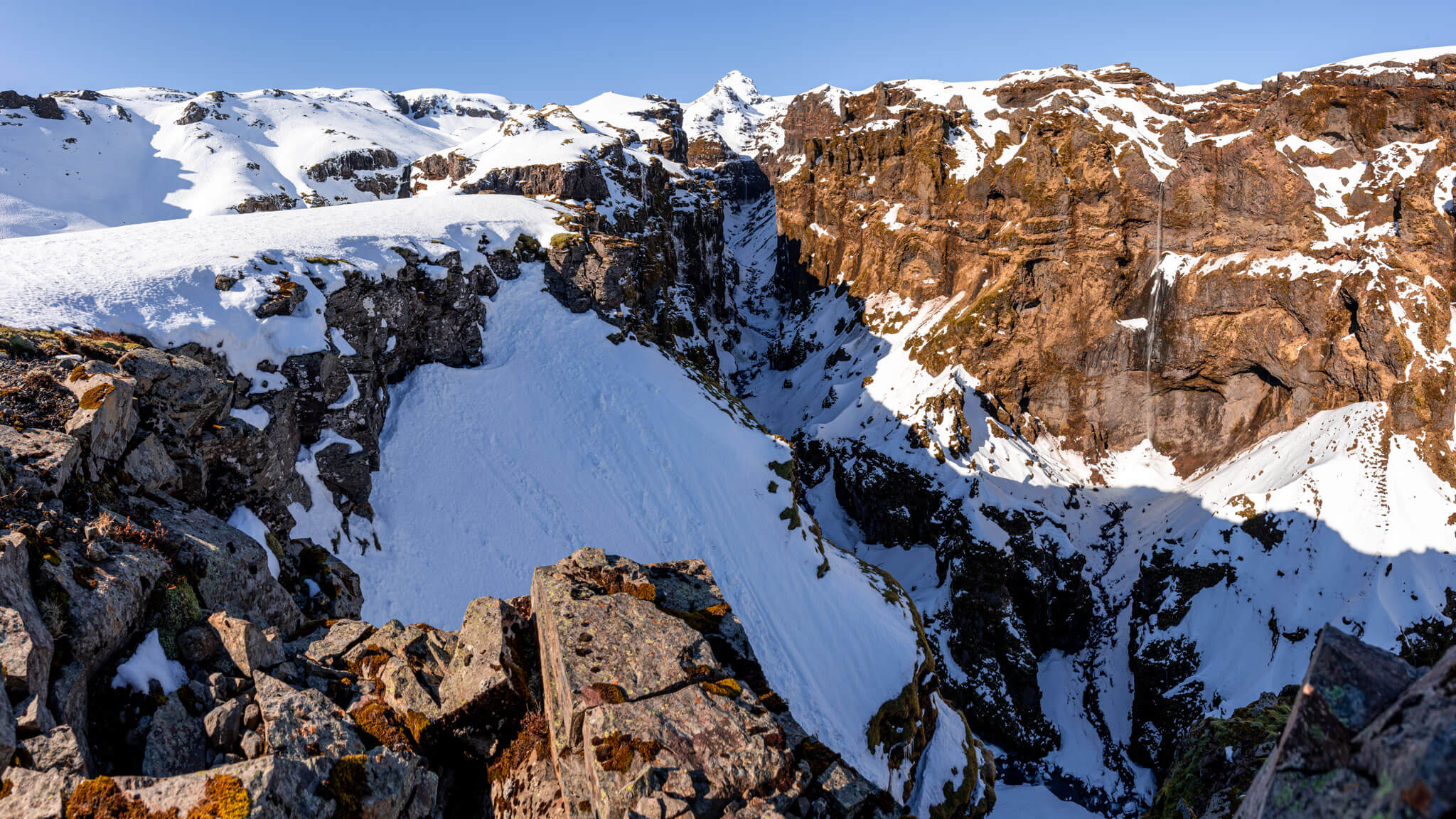
Take a break or kayak at Jökulsárlón glacier Lagoon
Jökulsárlón, also known as the “Glacier Lagoon,” is one of Iceland’s most spectacular natural wonders. This stunning glacial lake is located on the edge of Vatnajökull National Park and offers short hiking opportunities, cosy places to relax and also exciting boat or kayak trips around icebergs. Which way will you choose to watch floating icebergs?
If you are lucky, you will also witness wildlife. Seals can often be seen swimming in the lagoon or resting on the icebergs.

Look for icy jewelry at Diamond Beach
Just across the road from Jökulsárlón you can find Diamond Beach, where icebergs that have floated out of the lagoon wash up on the black sand shore. The contrast between the sparkling ice and the dark sand creates a striking visual, especially during sunrise or sunset.
After long day at wonderful sights under Vatnajökull glacier, you can take a rest in a nice Höfn village which offers many great accommodations options as well as restaurants.
My recommendation for accommodation for DAY 4: Lilja Guesthouse
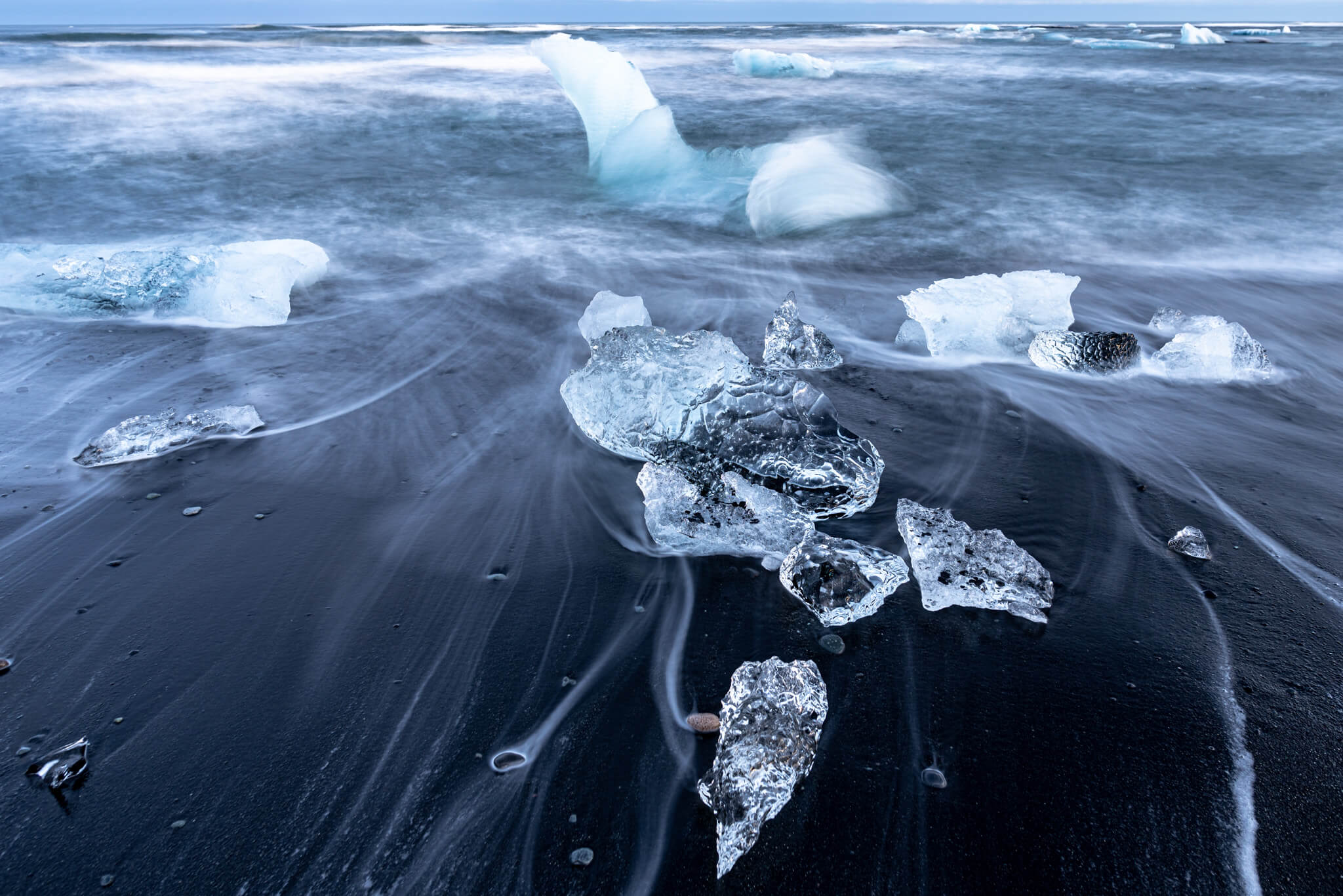
The most impressive mountain on Ring Road Iceland – Vestrahorn
The sixth day covers a visit of a sharp mountain with beautiful beach, longer drive and a reward in form of relax in the hot springs.
We start with Vestrahorn. It’s one of Iceland’s most iconic and photogenic mountains. Located on the southeastern coast near the town of Höfn, it offers stunning natural beauty with its sharp peaks, black sand beaches, and dynamic landscape.
There is a small entry fee to access the Stokksnes Peninsula, which helps maintain the area but it’s so worth paying. You will love the view. This location is also fantastic for photographing northern lights as you can have the Vestrahorn mountain in the foreground.
After Vestrahorn, there is a longer drive to my next recommended point of the Ring Road – Mývatn nature baths but it doesn’t mean there is nothing to see on the way. In fact, there are many scenic viewpoints which you will see just from the road. Have your eyes open and be ready to stop for breaks and enjoy the views. Don’t miss especially Hvalnes lighthouse with Eystrahorn mountain in the background (see my picture at the beginning of this article)
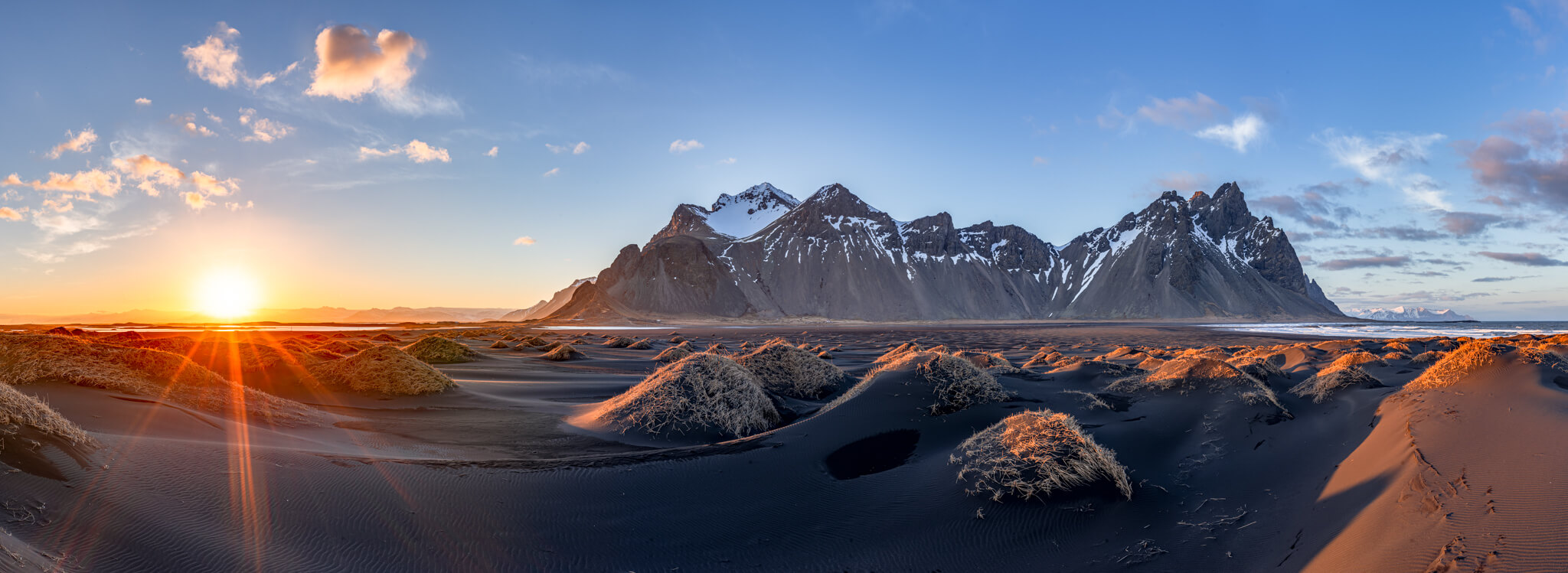
The best hot spring experience on Ring Road – Mývatn nature baths
The long drive will bring a fantastic reward. The Mývatn Nature Baths, often referred to as the “Blue Lagoon of the North,” are a popular geothermal spa located in the Mývatn region in northern Iceland. These baths offer a relaxing and scenic experience, similar to the more famous Blue Lagoon near Reykjavik, but with fewer crowds and a more cosy atmosphere. I myself enjoyed the baths during sunset and it was an unforgettable experience.
After the bath, you can spend a night in accommodation at Mývatn lake. This is my recommendation for accommodation for DAY 5: Vogafjós Farm Resort
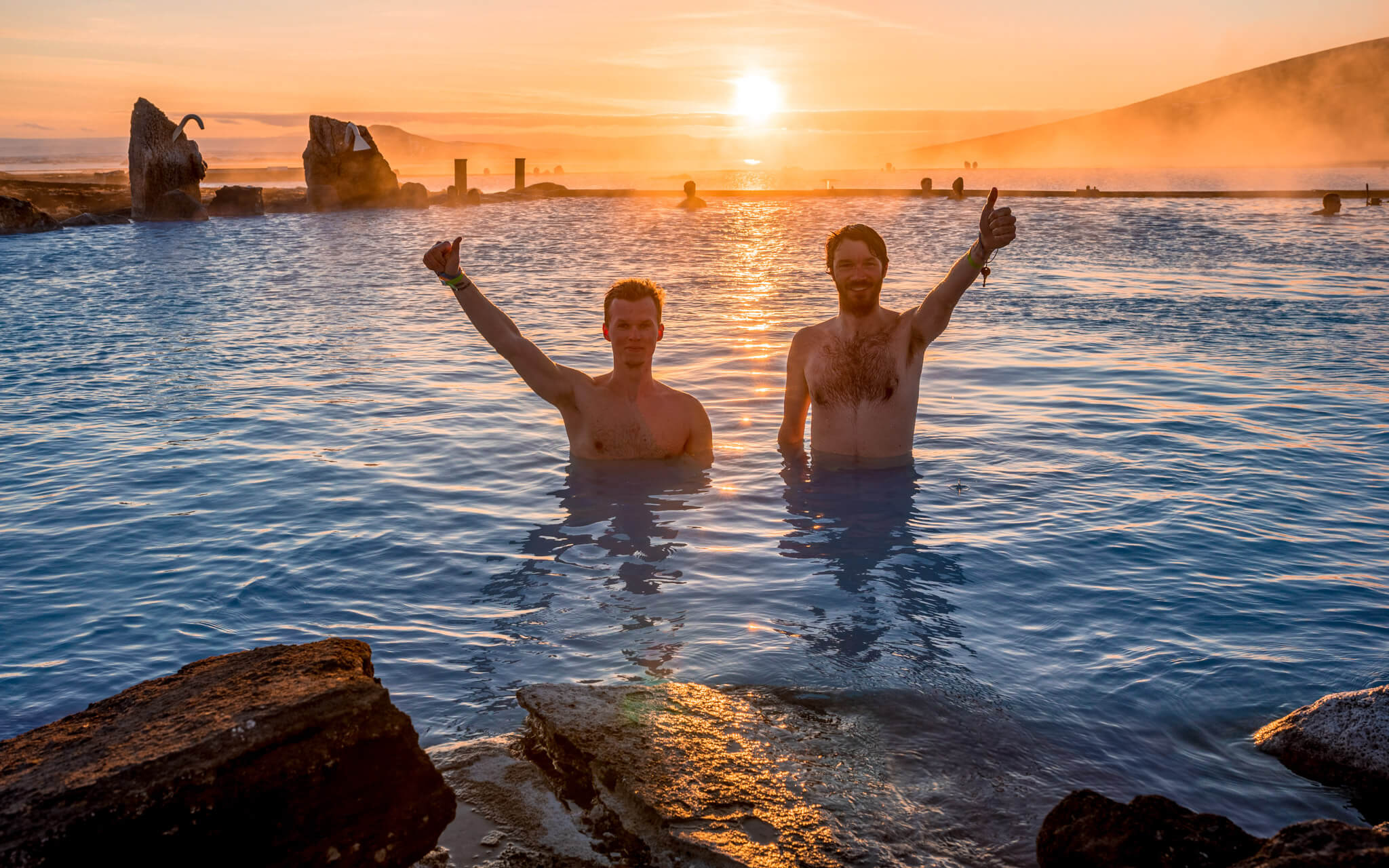
Explore volcano Krafla and Hverir Geothermal Area
Next day is devoted to volcanic activity and another interesting waterfall.
We start by visiting Krafla which offers a unique opportunity to witness the raw power of volcanic activity and explore Iceland’s dynamic geological landscape. Once you visit Krafla, don’t forget to hike up to the Krafla Caldera. The caldera itself is a massive volcanic crater formed by the collapse of the central magma chamber during past eruptions.
Before you drive further, visit The Hverir Geothermal Area. It is a fascinating geothermal field located in northern Iceland, near Mývatn Nature Baths. It is renowned for its boiling mud pots, steaming fumaroles, and vibrant mineral deposits.
Visit the god of Icelandic waterfalls – Goðafoss
Goðafoss, often translated as the “Waterfall of the Gods,” is one of Iceland’s most stunning natural attractions. Compared to waterfalls Seljalandsfoss and Skógafoss, Goðafoss is lower but much larger. It’s definitely worth visiting and I highly recommend photographing northern lights in the area. Wonderful, isn’t it?
My recommendation for accommodation for DAY 6: Torg Guest House
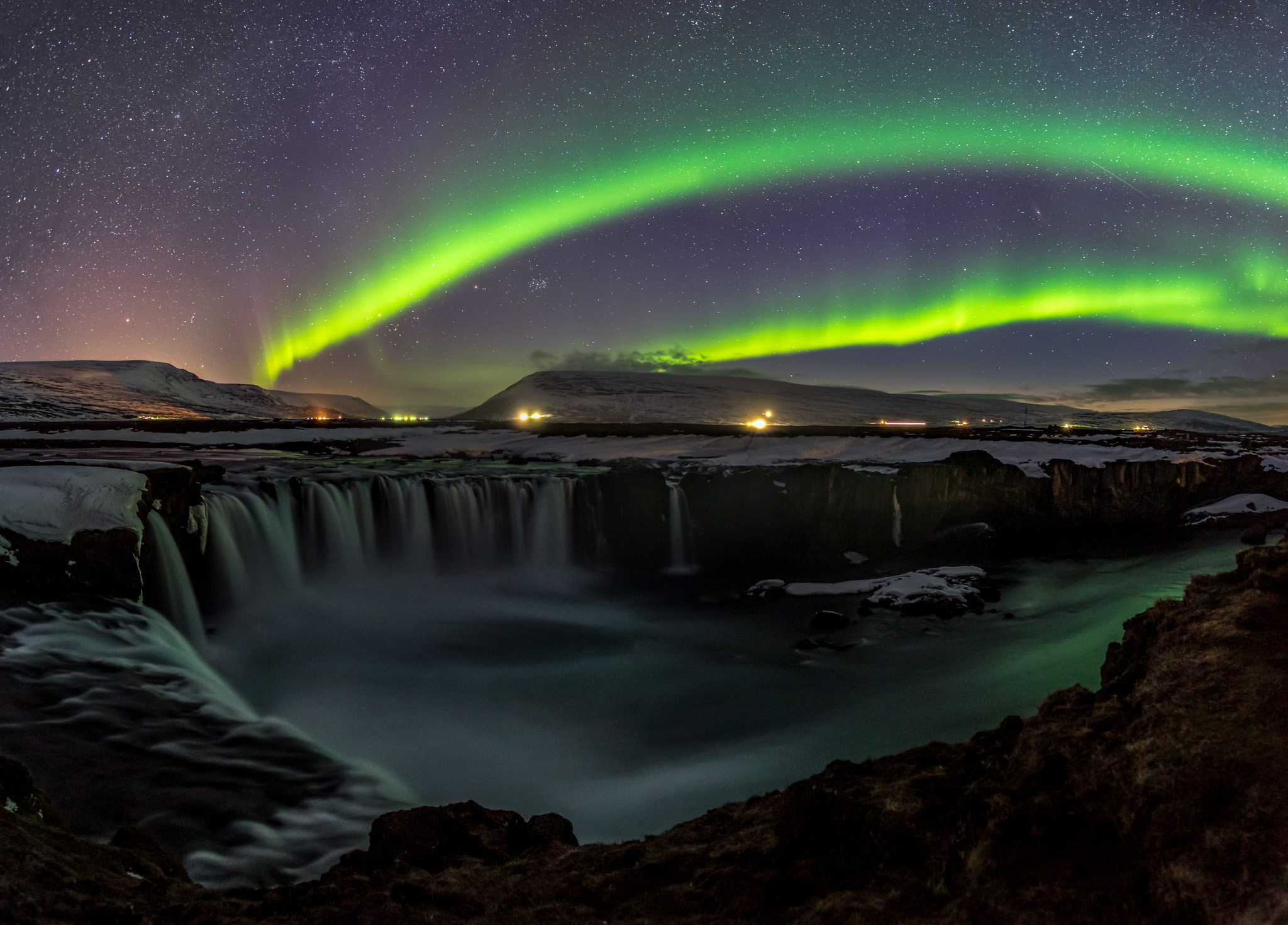
Explore capital of North Iceland – Akureyri
Akureyri is a cute village which you can find on the shores of the Eyjafjörður fjord. It is the largest village in the north so it is also sometimes called the capital of northern Iceland. As it is surrounded by mountains it makes it one of the most picturesque towns in Iceland. This village is a good spot to find cosy accommodation and you can also restock your food supplies as here are more opportunities.
Name Rocky island Hvitserkur
The next day could possibly be excluded since it covers sights on a detour from the Ring Road but I think it would be a pity. Both Hvítserkur and Kirkjufell are must see of Iceland in my opinion. Let’s take a look at them.
Hvítserkur is a 15-meter tall basalt sea stack with a unique shape. It resembles a giant creature, with a narrow neck and a rounded top, giving it the appearance of a dragon, elephant, or even a troll, depending on one’s perspective. What do you think? How does it look like? To visit Hvitserkur, it’s a short detour but it’s worth it.
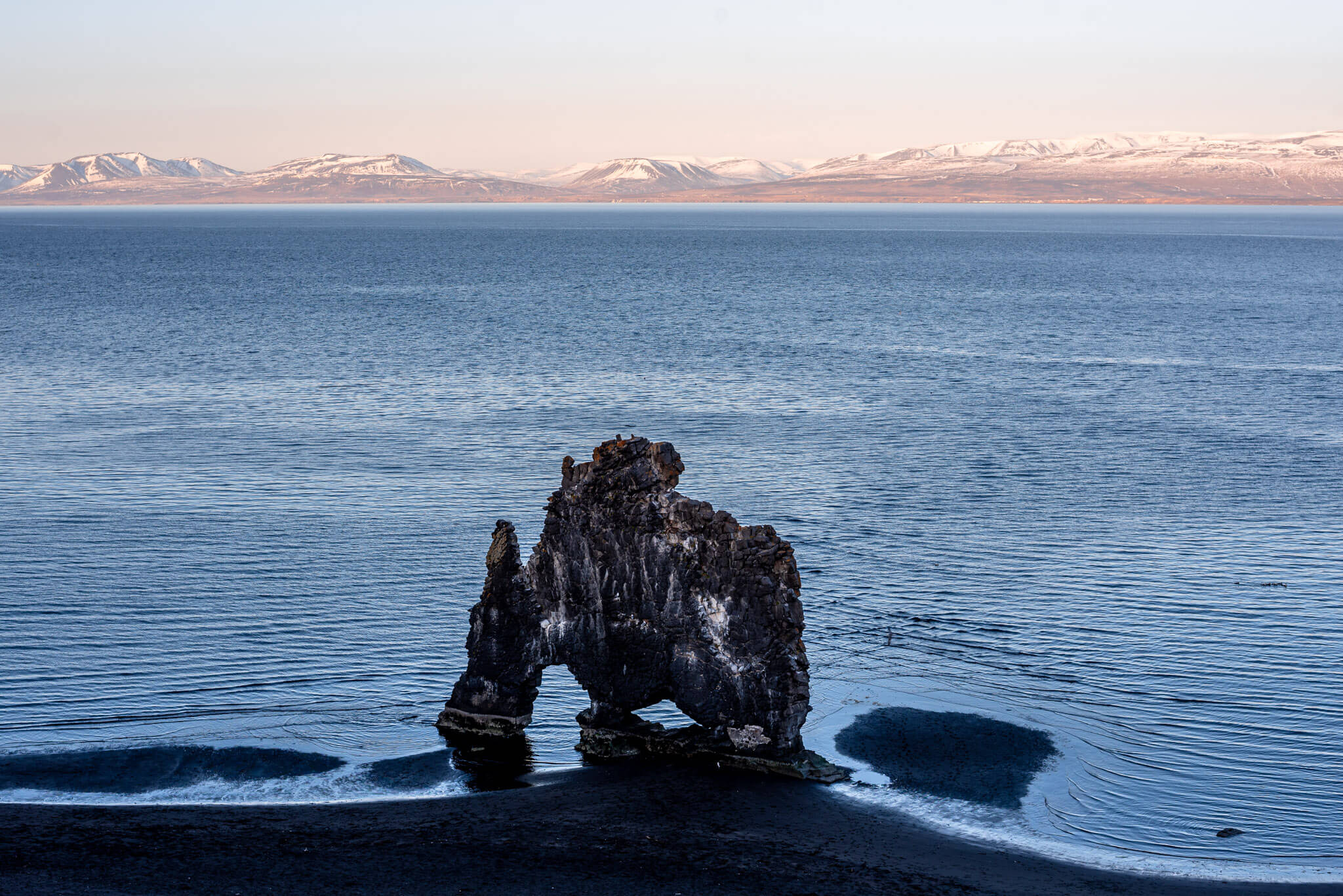
The most famous mountain in Iceland – Kirkjufell
Kirkjufell, often referred to as “Church Mountain” due to its distinctive shape, is one of Iceland’s most iconic and photographed mountains. It is located on the Snæfellsnes Peninsula in western Iceland so it is a bit detour to visit it but you can’t miss it. Kirkjufell with its same named waterfall is a must see place if you visit Iceland. If you are lucky with good weather, you can also hike to its peak.
On Snæfellsnes Peninsula, it’s also worth visiting the rough coast in the south west. They are easily accessible by car and Lóndragar view point as well as Gatklettur are fantastic spots for a lunch with incredible view.
My recommendation for accommodation for DAY 7: Stöð Guesthouse and apartments
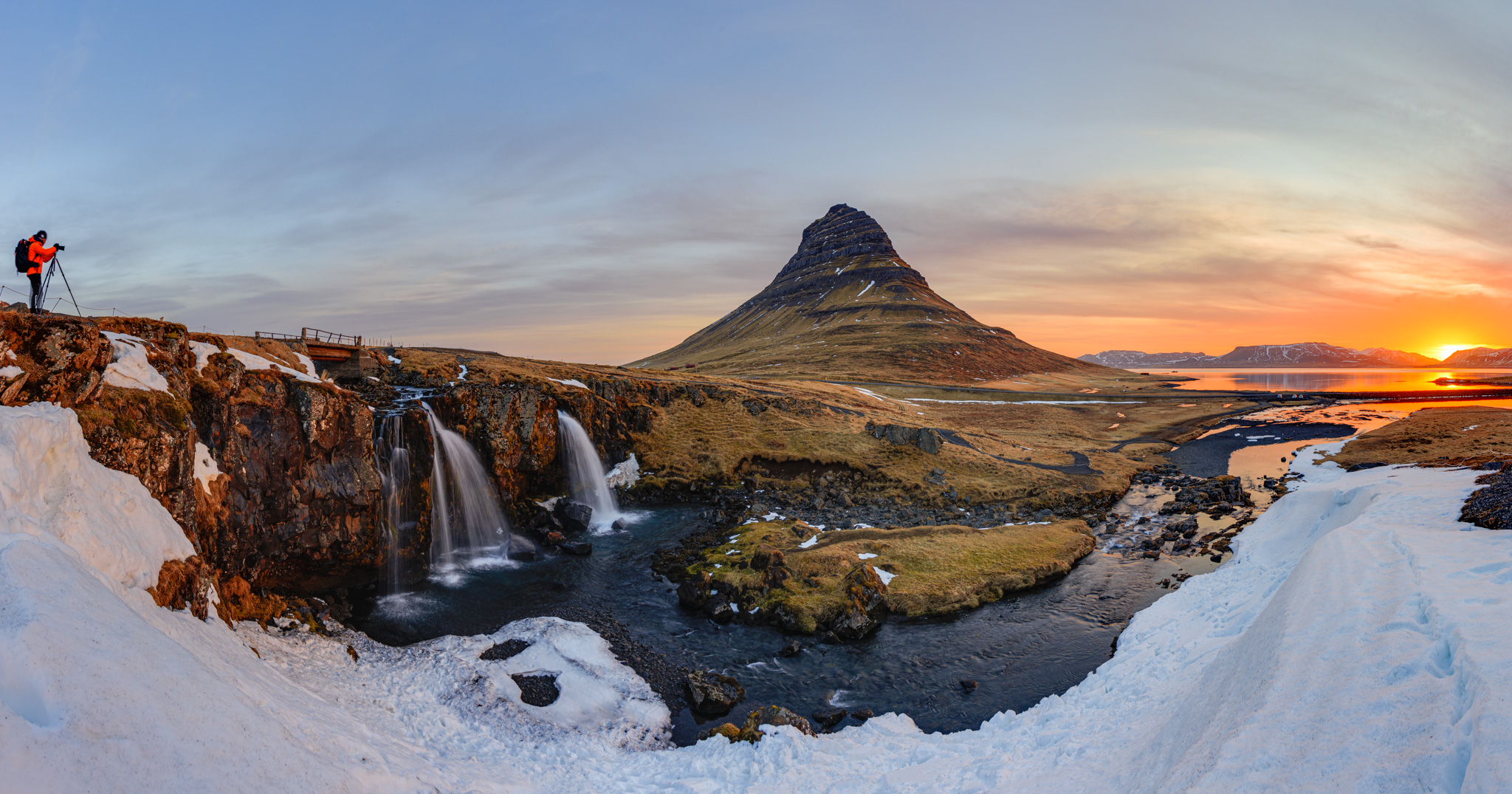
Every Icelandic trip ends in Reykjavik
Now we are back in the Icelandic capital. Keep 1-3 days for the city depending on how much you like exploring cities, museums and how much you want to be on safe side in case you are caught by bad weather on your journey via Icelandic Ring Road. Here are a few tips which you should experience before you head back home:
- Visit Hallgrímskirkja Church: Hallgrímskirkja is one of Reykjavík’s most iconic landmarks. This impressive church, designed by Guðjón Samúelsson, is inspired by Iceland’s basalt lava flows. During your visit you can also take the elevator to the top of the tower for panoramic views of Reykjavík and the surrounding landscape. On a clear day, you can see as far as Snæfellsjökull glacier.
- Experience Harpa Concert Hall: Harpa is a modern architectural gem located on Reykjavík’s waterfront. The building’s glass facade, designed by artist Ólafur Elíasson, reflects the city and the sea, creating a dynamic visual experience. Harpa hosts a variety of performances, including classical music concerts, operas, and contemporary music events. Check the schedule and try to catch a performance.
- Explore the Reykjavik Art Scene: Reykjavík Art museum showcases contemporary and modern art, including works by renowned Icelandic artists. The National Gallery of Iceland features a diverse collection of Icelandic and international art from the 19th century to the present day.
- Guided trips in Reykjavik: Would you like to learn about the capital and history of Iceland more? Book a guided trip during which you’ll learn from locals.
My recommendation for accommodation for DAY 8 and 9: Reykjavík Treasure B&B
Can you see puffins on the Ring Road trip around Iceland?
Puffins can be seen in Iceland from late April to September on certain places around the island. The easiest way to see them is to take a guided boat trip to Akurey and Lundey from Reykjavik. That’s why I also recommend a day extra in the capital which you can use to see these beautiful birds.
Alternatively, you can visit Westman Islands where you will find the largest colony of puffins around the whole Iceland. There are nearly 50% of all Icelandic puffins. Just be aware that you won’t be able to get close to the puffins at this location because puffins nest in protected area. If you visit Westman islands, head to the Stórhöfði puffin lookout and you will have a wonderful overview of the large puffin breeding grounds.
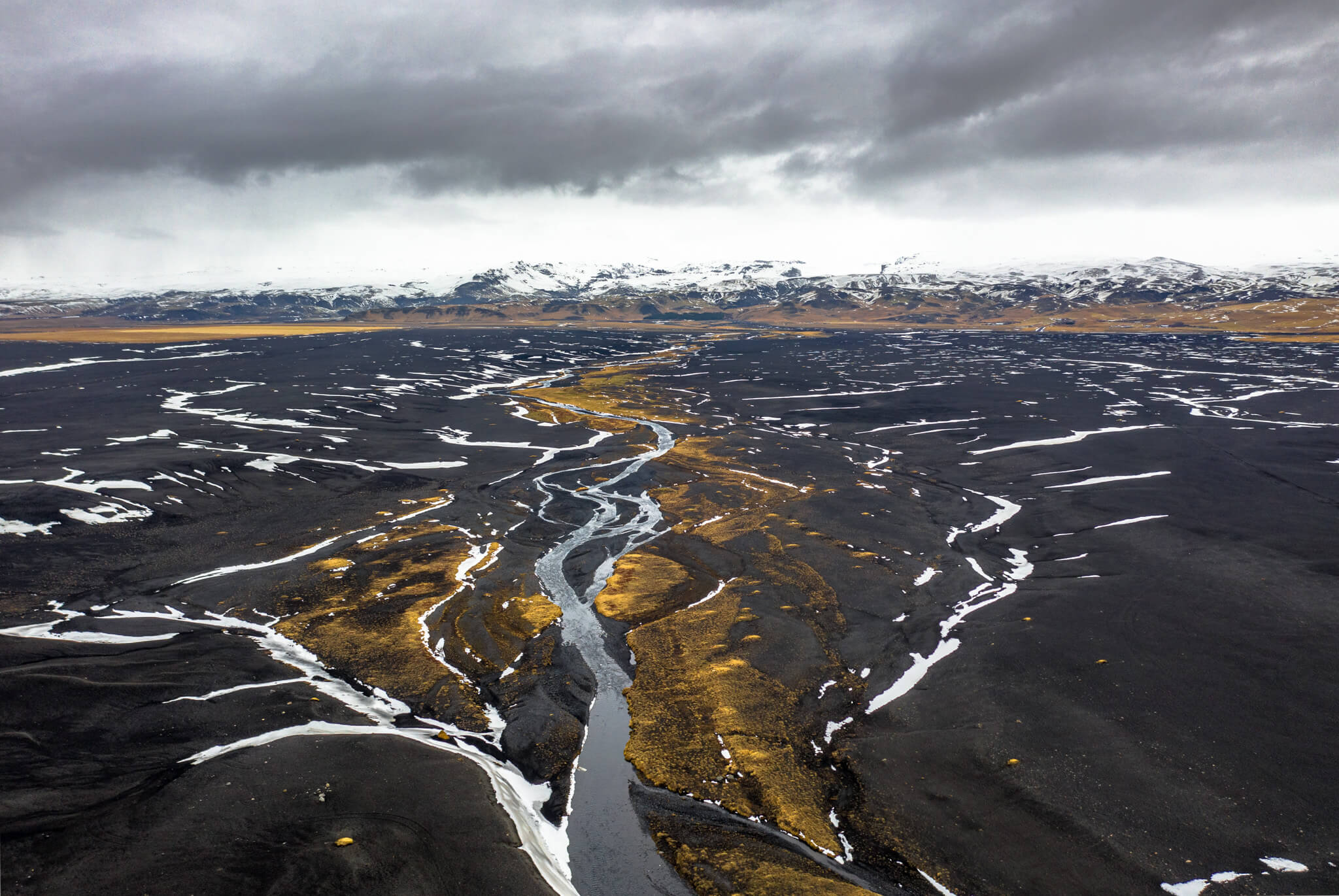
Taste Traditional Icelandic Cuisine, including fermented shark
No visit to Reykjavík would be complete without tasting some traditional Icelandic foods. Here are some recommendations:
- Fermented Shark (Hákarl): Known for its strong smell and unique taste, hákarl is a traditional Icelandic delicacy. You can try it at places like Café Loki, which offers a range of traditional Icelandic dishes
- Icelandic Hot Dogs: Speaking of hot dogs, Bæjarins Beztu Pylsur is a must-visit. These lamb-based hot dogs are a local favorite and come with a variety of toppings.
- Seafood: Reykjavík’s coastal location ensures an large variety of fresh seafood. Visit restaurants like Fiskmarkaðurinn (The Fish Market) or Sjávargrillið (Seafood Grill) for an amazing seafood dining experience.
- Skyr: Try this traditional Icelandic dairy product, similar to yogurt but with a thicker consistency and a unique taste. It’s available in various flavors and can be found in supermarkets and cafes throughout the island.
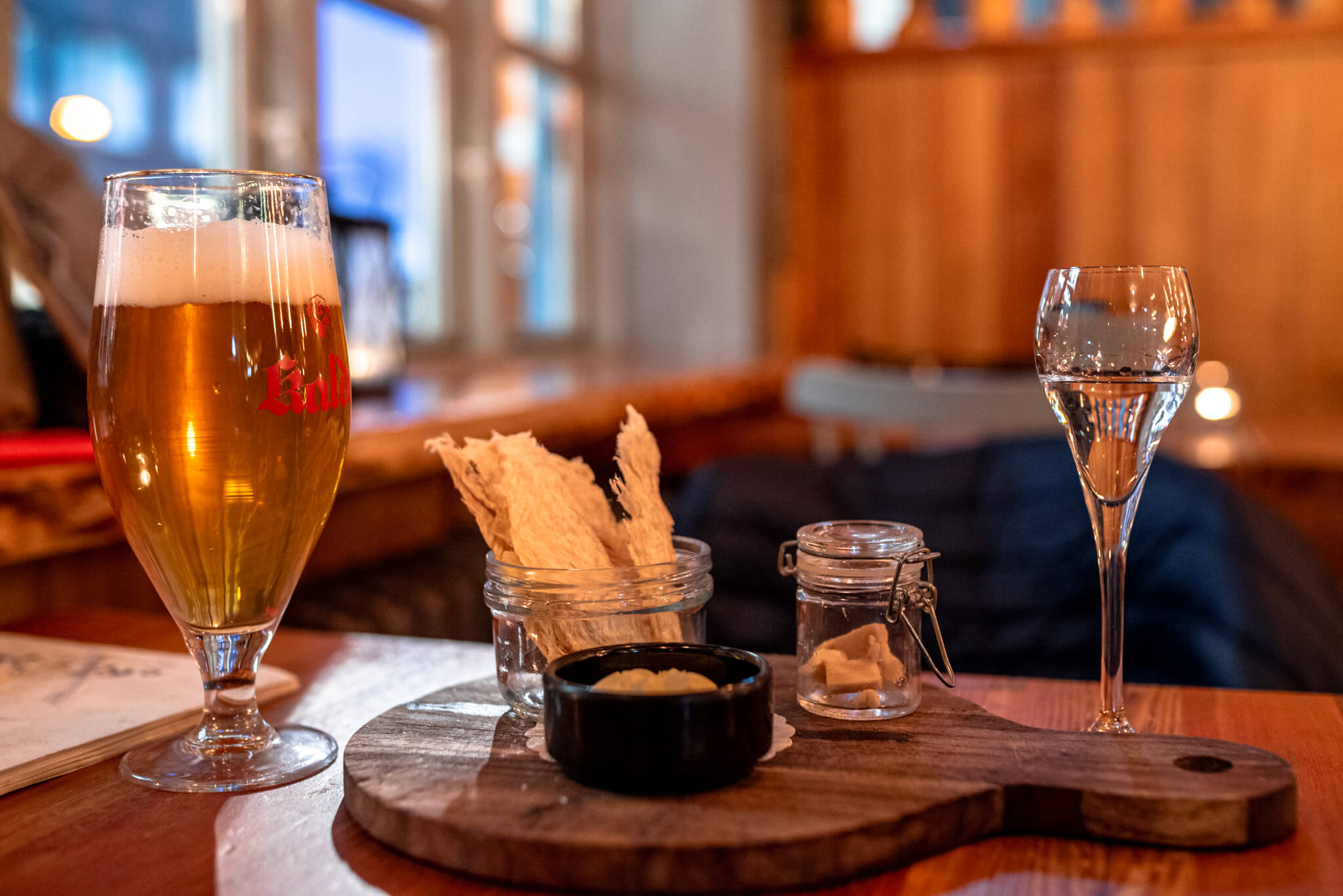
Obey Ring road speed
My last recommendation is to follow strict speed limit 90km/h. The limit is set for safety as weather can cause crazy weather conditions but you also don’t want to risk high penalty fees for speeding. They are very high in Iceland.
Have a wonderful Icelandic experience!
Disclosure: Please note that some of the links above may be affiliate links, and I earn a small commission at no additional cost to you, if you make a purchase. I recommend only products and services of companies I use and the income goes to keeping the website running.
